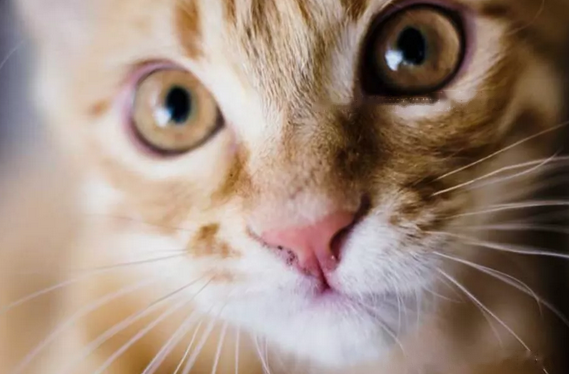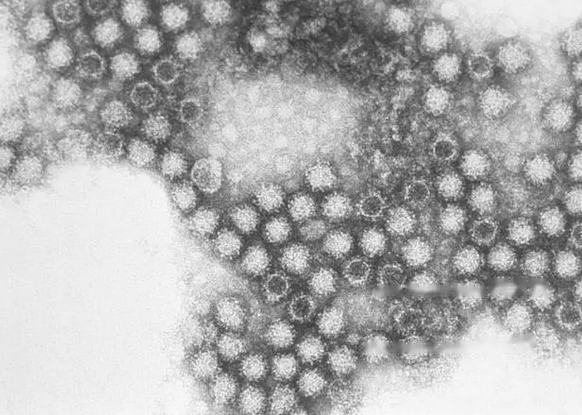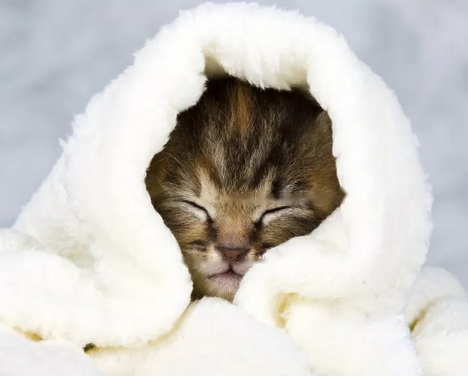Cat calicivirus is also known as FCV. In fact, calicivirus infection is a common respiratory disease in cats. The most common symptom is sneezing, and may also be accompanied by drooling and unsteady walking. Symptoms such as prolonged sleep time and poor mental health mainly affect the cat's respiratory tract (nasal cavity and lungs), oral cavity (tongue ulcer), intestine and musculoskeletal system.

Cat goblet is highly contagious in kittens, especially unvaccinated cats, multi-cat households or cats The living environment is not well ventilated, so you need to pay attention! Once you find that the cat is frequently sneezing, you should take it to the hospital for inspection in time. There are at least 40 different FCV strains of calicivirus, which may cause different severity depending on the strain!
· Airborne
When cats sneeze, the virus can be spread in the air through droplets, although most droplets fall to the ground, but the virus can be spread in the dust particles of the smile Or live on the dander and persist for hours until it is inhaled by another host, which can cause severe damage to the respiratory tract.

· Contact with contaminated objects
This is more common in cats In households, when they share water or food bowls, they can easily catch the virus. Therefore, maintaining good hygiene habits is very important to the health of cats and cats. Failure to clean the food bowl or replace fresh cat food in time will also cause cats to suffer from these diseases.
· Contact with an infected cat
When a healthy cat comes into contact with an infected cat's saliva, eyes, snot, or feces, then it will also be easily infected! Especially in foster care places, be sure to confirm whether there are good prevention and isolation measures at the place of placement to protect cats and cats from calicivirus.
· Nasal discharge (clear color may develop to purulent color)
· Sneezing
Loss of appetite, dehydration
Poor energy, lethargy
Difficulty chewing food, drooling
Red eyes (secondary conjunctivitis) Caused)
· Mouth ulcers
· Loud breathing, murmur, difficulty
· Fever (hot ears, pads)
· Acute upper respiratory tract infection
· Gingivitis, stomatitis
· Joint pain
· Pneumonia, hepatitis, pancreatitis (very rare virus mutation cause)

But many symptoms do not directly indicate whether a cat has calicivirus because it can manifest in many different forms , each form can potentially be caused by other pathogens. Like mouth ulcers, feline herpes virus can also cause this, although it is less common than calicivirus.
FCV vaccinations are important for cats, but they do not necessarily prevent FCV infection, they only reduce the severity of the disease degree. Vaccination can only control viral infections, but not as the only tool to prevent the disease.
And some studies have shown that vaccines against respiratory viruses reduce protection over time. Therefore, in the case of high risk of infection, a supplementary injection can be given to strengthen the immune effect of the vaccine.
There is no complete cure for calicivirus, it is often complicated by secondary bacterial infections, and antibiotics are often recommended Supportive care, but antibiotics are viral in origin, are only useful in secondary bacterial infections, don't work against viruses, and can make the situation worse by potentially causing the cat to become anorexic. So good care is very important, can effectively help them reduce the severity of clinical symptoms.
· Wipe them gently with a damp towel, avoiding eyes and nose.
· Bring cats into the bathroom (not shower), the hot steam can help provide moisture to their noses.
· Minimize stress when your cat is sick and stay away from other cats to prevent spreading the virus.
· Because cats cannot smell food clearly, try to eat heated food.
· Disinfect the food bowl, litter box, water bowl, etc. it uses repeatedly.
· You should wash your hands thoroughly before and after touching other cats to reduce the risk of disease transmission.
Sanitize the air
Feline calicivirus is airborne because Pathogens can live on dust particles and dander for a long time, so we can use air purification systems to eliminate bacteria and viruses floating in the air. In addition, you can also ventilate regularly to maintain a good air quality in your home.
· Disinfecting items
Regularly clean and disinfect the cat's water bowl, food bowl, cat litter, etc. If there are multiple cats in the house, they need to be kept in isolation.
· Avoid adding new members
In the case of aboriginal people who have been infected with calicivirus, adding new cats will increase their relapse The new members can cause stronger stress, reduce the resistance of the aborigines, and make them more susceptible to virus infection.
![[Dog Training 5] The training method of pet dog dining etiquette](/static/img/12192/12192_1.jpg)






